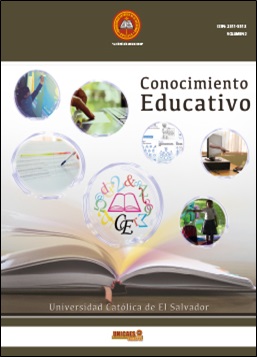Cyberbullying, acoso usando las Tecnologías de Información y Comunicación
DOI:
https://doi.org/10.5377/ce.v2i0.5638Palabras clave:
Bullying, ciberbullying, tecnologías, comunicación, educaciónResumen
Existe una forma de acoso entre jóvenes denominado Ciberbullying o Ciber acoso, que consiste en utilizar las Tecnologías de Información y Comunicación (TIC), específicamente el correo electrónico, las redes sociales, entre otros,; con el fin de acosar, hostigar y denigrar, a un individuo o un grupo de personas. Se analiza la agresividad humana y el bullying como un tipo de agresión para así comprender el ciberbullying. El objetivo principal de la investigación fue explorar cómo se manifiestan las variables personales, la experiencia ciberbullying y la actitud ante la violencia, que viven los estudiantes envueltos en la dinámica asociada a este tipo de procesos sociales.
Los resultados del estudio revelaron la existencia de ciberacoso en estudiantes de enseñanza media (1° a 4° medio), de entre 13 y 17 años de edad de la comuna de Futrono. Del total de la muestra (70 participantes), un 10% se identifica como agresor, un 11.4% como víctima y un 78.2% como espectador de este fenómeno.
La metodología utilizada fue el estudio de caso múltiple, aplicándose una encuesta como instrumento para la recolección de información. Dentro de los principales hallazgos se destaca el permanente uso de computador y celular en los estudiantes, cuyo rango de uso diario sobrepasa las tres horas; además de detectar a Facebook como la red social con mayor popularidad entre ellos.
Conocimiento Educactivo, Vol. 2, 2015: 27-40
Descargas
1719
Descargas
Publicado
Cómo citar
Número
Sección
Licencia
© Conocimiento Educativo
The copyright of the articles is transferred to the journal Conocimiento Educativo
As a user of this journal, you have:
● Open access to consult the information contained in this number
● Permission to copy, distribute, display, perform or combine the above practices, regarding the use of the information, as long as it is strictly non-profit.

This work is licensed under a Creative Commons Attribution-NonCommercial 4.0 International License.

